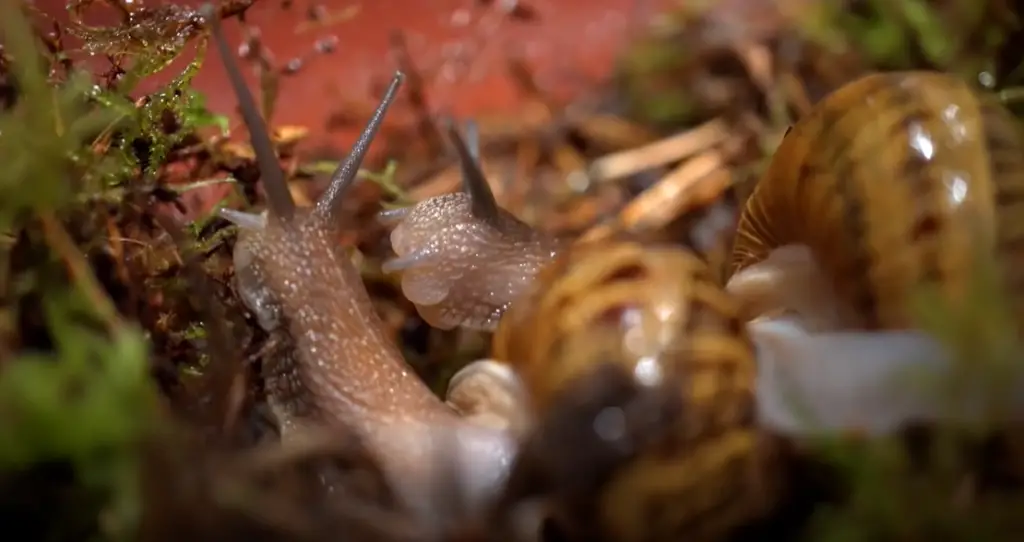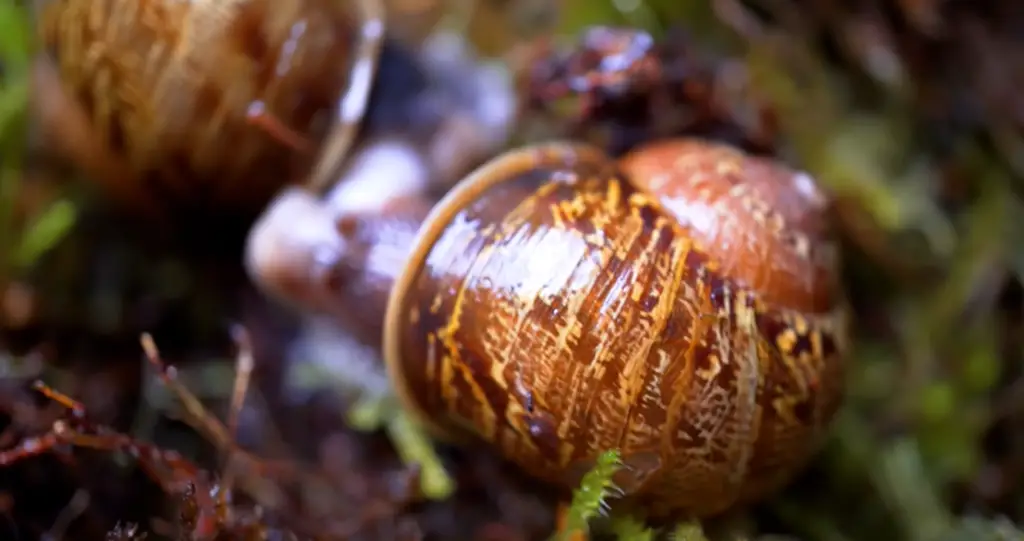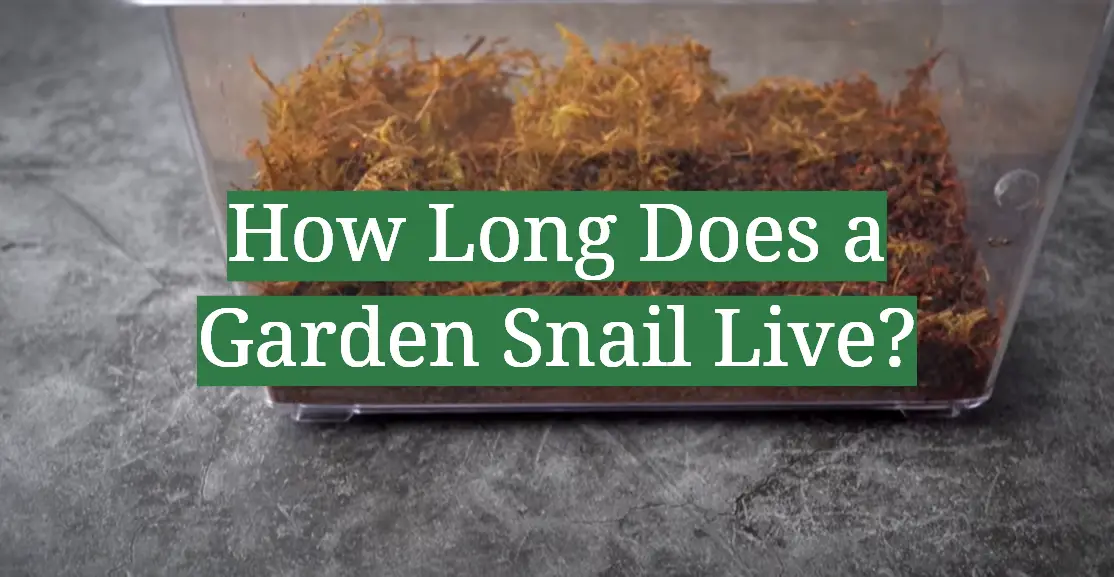Snails are a gardener’s best friend. Not only do they eat the pesky bugs, but they also help to fertilize the soil with their droppings. But how long do these little creatures actually live? This blog post will take a look at the average lifespan of a garden snail and some of the things that can affect it. Additionally, it will explore some of the common myths and facts associated with these slow-moving creatures.
The Life Cycle of a Snail
Snails hatch from their eggs after a period of incubation. Newly hatched snails, known as young juveniles, are much smaller than adults and lack the shells that protect them in later stages of life. After hatching, the juvenile snail starts to consume its eggshell to gain nutrients. As it grows over time, the shell begins to thicken and expand until it is similar in shape and size to an adult snail’s shell.
During this stage of growth, the snail will feed on vegetation such as leaves and flowers or organic matter found in soil and bark. Snails also eat other small invertebrates like worms or insects. For the snail’s body to develop properly, it needs both calcium carbonate and protein.
The life cycle of a snail can last anywhere from 6 months to 2 years depending on species and environmental conditions. Adult snails can live for many years before dying off naturally due to old age or predation by other animals such as birds and mammals. Snail shells are often collected after death as they make beautiful decorations when polished and varnished [1].

Garden Snail Lifespan
Captivity or not, Garden Snails Have a Short Lifespan
The average lifespan of a garden snail is about 1-2 years, depending on the species and environment. In captivity, with adequate nutrition, warmth, and humidity levels, garden snails can live up to 3-4 years. Outdoor snails have shorter lifespans due to predators and environmental conditions such as cold temperatures or drought. However, even in captivity with ideal conditions, garden snails do not live as long as other pets such as cats or dogs. This means that their owners will need to be prepared for the eventuality of short life spans when caring for these creatures. Fortunately, they reproduce quickly so it may not take too long to replace them if necessary.
Food and Diet
Garden snails are herbivores, meaning that they feed on plants and fruits. They will eat just about any type of vegetation but generally prefer soft-leaved greens. If there is a lack of food available in the wild, garden snails may even scavenge for dead insects or other animals to supplement their diet. In captivity, it is important to provide them with fresh produce such as lettuce, spinach, and cucumbers. It’s also important to offer variety so they don’t become bored with their meals.
Moisture Requirements
Garden snails require moisture to survive. In the wild, they are usually found in damp areas such as grassy meadows and under logs or rocks. They also need a steady supply of water for drinking purposes. In captivity, it is important to provide them with moist soil so that their skin does not dry out. A shallow dish filled with clean water can be provided as well but should be changed regularly to prevent contamination from parasites and bacteria.
Habitat Requirements
Garden snails need a habitat that provides warmth and humidity, which can be easily achieved by a terrarium or aquarium. Depending on the species, garden snails may burrow into the soil or climb up walls or furniture in search of food. They also need places to hide and retreat from the light. Hiding spots can be created with rocks, logs, or pieces of bark. It is important to keep their habitats clean and free of any decaying matter.

How Can You Tell How Old a Snail Is?
Rings on the shell
Snails are mollusks, a type of shelled creature that grows by adding rings to its shell. Just like trees, scientists can count the number of rings on a snail’s shell to estimate its age. The oldest recorded land snail was reported to be at least 105 years old! The shells of snails also reflect their diet and environment as they grow. For example, if they live in an area where there is not much calcium, such as limestone or chalk, their shells will be thinner and more brittle than those living in areas with plenty of calcium deposits. This can affect the accuracy of age estimates based on counting the rings. Scientists have also developed other methods for estimating the age of snails, such as measuring the thickness of their shells or levels of certain isotopes in their bodies [2].
Growth rate
The age of a snail can also be estimated by looking at its growth rate. Snails grow in pulses, meaning they have periods where they grow quickly followed by slower periods. It is possible to estimate the age of a snail based on the size and shape of its shell and how fast it has been growing over time. Unfortunately, this method is affected by environmental conditions and can only provide an approximate estimate of the age of a snail.
Behavioral cues
Another way to estimate the age of a snail is to look at its behavior. Younger snails are usually more active than older ones, so they may be seen moving around more often. They may also have brighter shell colors and sharp spines on their shells. Older snails tend to move slower, have duller colors, and have smoother shells. Of course, this method can only give a rough estimate of the age of a snail because individual behavior can vary and environmental conditions can affect the speed at which snails grow.
Snail mouthparts
Another way to estimate the age of a snail is by looking at its mouthparts. Snails have a hard, horny tongue-like structure called a radula that they use for eating. This radula wears down over time, so scientists can look at its shape and size to get an idea of how old the snail is. By comparing it to radula from other snails, researchers can make an educated guess about the age of an individual snail.
Body size
Finally, scientists can estimate the age of a snail by looking at its overall body size. As snails grow older, they tend to get bigger. By examining the size and shape of an individual snail, researchers can make an educated guess about its age. Of course, this method is also affected by environmental conditions and individual growth rates, so it only provides approximate estimates. In conclusion, there are several ways to estimate the age of a snail. The most accurate methods involve counting rings on the shell or measuring isotope levels in the body. However, these methods require specialized equipment that is not always available.
What Are Snails’ Main Threats?
Snails as prey
Snails are a vital source of food for many wild animals, including birds, amphibians, reptiles and mammals. Predation is natural in any ecosystem but excessive predation can be detrimental to snail populations.

Habitat destruction
The human activities that cause habitat destruction are a major threat to snails. The most common forms of habitat destruction include deforestation and agricultural development. These activities disrupt the delicate balance of an ecosystem which can lead to drastic declines in snail populations.
Invasive species
Invasive species are non-native organisms that can cause harm to native ecosystems by disrupting the natural balance of their environment. Invasive snails, in particular, have been known to spread diseases and outcompete native snails for food and resources.
Pollution
Pollution is a major threat to snails and their habitats. Chemical pollutants such as fertilizers, herbicides, and pesticides can have drastic impacts on snail populations. Physical pollution like plastic debris, oil spills, and sediment runoff can also damage the habitats of these creatures.
Climate Change
Climate change is causing unpredictable weather patterns which can be detrimental for many species including snails. Extreme temperature fluctuations, floods, droughts, and other climate-related events can cause population declines in certain areas or even wipe out entire species of snails if they are unable to adapt quickly enough.
Snails as threats to plants and farming
Snails can be major agricultural pests, as many species feed on a variety of crops. Farmers have to employ various strategies such as trapping, baiting, and spraying with pesticides to protect their crops from snails. This can lead to increased expenses and losses in crop production.
How Does Snails’ Lifespan Compare to Slugs?
Snails have a longer lifespan than slugs, with some species living up to 10-15 years in captivity. Slugs, on the other hand, typically live between 1-3 years. This difference could be due to their different shell structures and metabolic rates. Slugs lack shells, which offer protection from predators as well as extreme temperatures and moisture levels. In contrast, snails’ shells act like a home or barrier that helps them regulate body temperature and protect them from threats.
By understanding the differences between these two creatures, you can appreciate the unique adaptations that each has evolved to survive in their environment. While slugs may have a shorter lifespan, they still play an important role in their ecosystems as decomposers. Similarly, snails’ shells help them live longer and provide essential food for other animals such as birds and reptiles.
Ultimately, the lifespans of snails and slugs demonstrate the diverse strategies that animals have evolved to survive in different environments. The comparison between these two species helps us better understand their unique adaptations and appreciate the important role each plays in its habitat [3].
FAQ
How can you tell how old a garden snail is?
The age of a garden snail can be determined by examining the growth rings on its shell. These rings are formed as the snail grows and become more pronounced as they get older, similar to how tree rings indicate the age of trees. The number of these visible growth rings can help estimate a garden snail’s age. Additionally, an experienced researcher may be able to make an educated guess based on the size, shape, and color of the shell. However, it is not possible to tell a precise age because snails grow at different rates depending on their living conditions and feeding habits.

Do garden snails make good pets?
Garden snails can make excellent pets, however, they require very specific care and attention. They are extremely sensitive to changes in their environment and must be kept in an enclosure with a carefully regulated temperature and humidity level. In terms of feeding, garden snails need fresh fruits and vegetables along with calcium-rich foods such as cuttlefish bone. Additionally, owners need to provide places for their pet snails to hide and rest during the day. Although garden snails can live up to 3 years with proper care, they may not be suitable for everyone due to their delicate nature and special needs.
Do garden snails have feelings?
Although research is limited, some studies suggest that garden snails may be capable of feeling emotions such as fear and anger. This is mainly because they have a nervous system similar to other animals and can respond to stimuli in their environment. Additionally, garden snails also exhibit behaviors such as courtship rituals which suggest that they are more complex than previously thought. However, further research is needed before any firm conclusions can be made about the emotional capabilities of garden snails.
What types of plants do garden snails eat?
Garden snails typically feed on tender young leaves, flowers, stems, fruits, and vegetables. They tend to prefer overripe or rotted produce as it has more moisture and flavor. Common plants that garden snails like to eat include lettuce, cabbage, spinach, celery, tomatoes, and potatoes. Additionally, they may also feed on fungi and algae growing in the soil. It is important to note that garden snails do not harm healthy and established plants as their feeding habits are quite selective.
Useful Video: Life Cycle of Garden Snails (mating, eggs & babies) | BAO After Work
Conclusion
A garden snail’s lifespan can vary in duration depending on the species and environmental factors. Generally, most garden snails are known to live up to three years. However, some species may have a much longer lifespan of five or more years while others only manage to survive for one year or less. Garden snails can be beneficial animals when they inhabit gardens, as they help with decomposition, aeration of the soil, and increasing fertility. To encourage their growth and longevity proper care must be taken by providing them with adequate food sources and shelter from extreme temperatures. With proper care and environment garden snails can easily exceed their expected lifespans, making them great companions for any gardener or outdoor enthusiast.
References:
- https://study.com/learn/lesson/snail-life-cycle-reproduce.html
- https://theconversation.com/curious-kids-how-long-would-garden-snails-live-if-they-were-not-eaten-by-another-animal
- https://a-z-animals.com/blog/how-long-do-snails-live/










Leave a Reply
View Comments